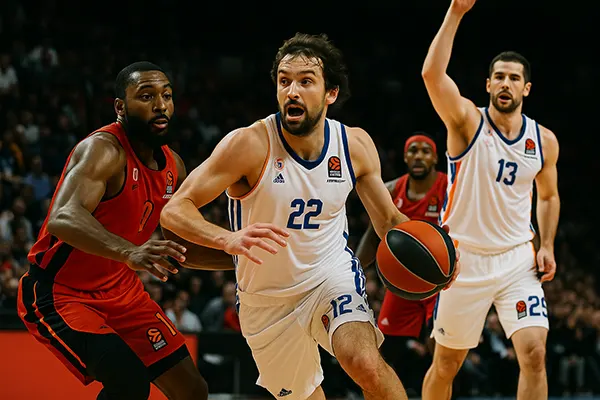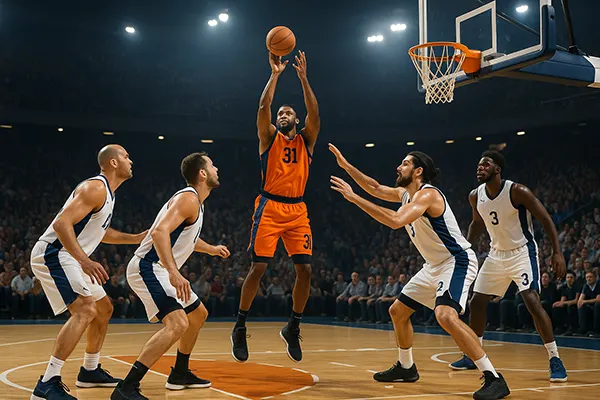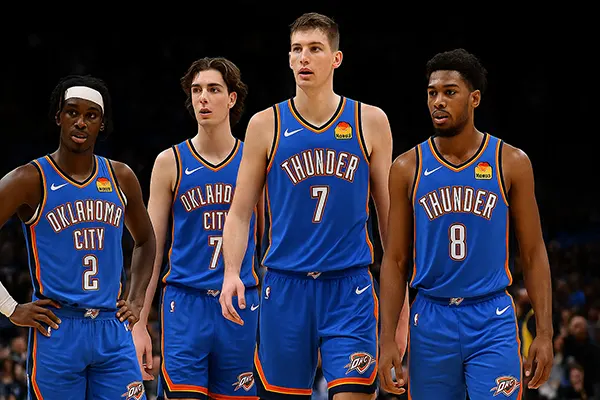Basketball Forecast: EuroLeague 2025/26 Trends and Betting Insights

The 2025/26 EuroLeague season brings renewed excitement and tactical shifts across Europe’s top basketball clubs. With teams like Real Madrid, Anadolu Efes, and Olympiacos shaping the competitive balance, bettors and fans alike are paying closer attention to evolving patterns that define this year’s contests. Understanding these developments is crucial for making informed predictions and responsible betting choices throughout the season.
Current Trends in European Basketball Leagues
As the EuroLeague enters its 25th anniversary season, the overall pace of the game continues to accelerate. Teams rely more on transition plays and high-tempo offence, with average points per game increasing to 83.7 — the highest in the last decade. This rise highlights the ongoing influence of American-style basketball, particularly in backcourt strategies and perimeter shooting efficiency.
However, a growing emphasis on defensive versatility also defines 2025/26. Clubs such as AS Monaco and Virtus Bologna have prioritised adaptable line-ups capable of switching seamlessly between man-to-man and zone defence. This balance between offensive energy and defensive structure creates a more unpredictable environment for bettors analysing total points markets.
Additionally, home-court advantage, once a decisive factor in European basketball, appears to be declining. Data from early 2025 suggests that away teams win approximately 45% of matches — a record figure — partially due to increased player familiarity with travel routines and neutralised fan pressure post-pandemic.
Statistical Insights and Betting Patterns
Recent analytics indicate that the “total over” betting trend continues to dominate. In over 60% of EuroLeague fixtures since January 2025, the combined total points have exceeded bookmakers’ expectations. This stems from improved offensive depth, where even bench players contribute consistently from beyond the arc.
Nevertheless, bettors should not underestimate the value of analysing player fatigue and rotation patterns. The congested EuroLeague schedule — often with back-to-back games across different countries — significantly impacts shooting accuracy in late-season matches. Smart betting strategies now factor in rest days and travel distance more than ever before.
For example, when Real Madrid faces Fenerbahçe in Istanbul after a double-header in Spain, the likelihood of underperformance increases by approximately 8–10%. Such micro-factors have become vital in shaping both pre-match and live-betting models for 2025/26.
Key Teams and Players to Watch in 2025/26
Real Madrid remains the benchmark of European basketball excellence. Their roster, led by Dzanan Musa and Mario Hezonja, combines experience with explosive scoring ability. Meanwhile, Anadolu Efes has reinvented its approach under head coach Tomislav Mijatović, focusing on spacing and pick-and-roll dominance through Shane Larkin and Will Clyburn.
Another strong contender is Olympiacos, whose defensive metrics stand among the top three in the league. The Greek side’s disciplined rotations and rebounding efficiency make them a popular pick for handicap markets. Their consistency on the road also presents profitable opportunities for value bettors.
Rising stars such as Rokas Jokubaitis (Barcelona) and Matteo Spagnolo (ALBA Berlin) are also shaping the new generation of EuroLeague talent. Their rapid adaptation to high-pressure environments reinforces the league’s position as a global breeding ground for elite basketball intellect and tactical innovation.
Match Focus: Barcelona vs Anadolu Efes
One of the most anticipated matchups of the upcoming round features Barcelona against Anadolu Efes. Both clubs have contrasting styles — Barcelona’s structured half-court offence versus Efes’ dynamic perimeter play. Statistical analysis from recent meetings shows that the average total surpasses 165 points, making “Over 163.5” a viable early-line option.
Injuries and rotations could play a decisive role. Barcelona’s centre Jan Veselý has been managing limited minutes due to knee recovery, while Efes relies heavily on Larkin’s scoring output, averaging 19.8 points per game. Bettors should monitor official injury reports before wagering.
Considering current form and travel schedules, Efes may enter this matchup slightly fatigued, giving Barcelona a projected edge of +4.5 on the handicap. However, value remains on the total market rather than the outright winner.

External Factors Influencing EuroLeague Betting
Beyond statistics, several external variables significantly shape EuroLeague outcomes. Travel logistics remain one of the most underestimated factors. Clubs covering over 15,000 kilometres per month often experience reduced shooting accuracy and slower defensive recovery rates, especially during double-game weeks.
Injury management also plays an essential role. The introduction of stricter load-management protocols across EuroLeague teams in 2025 aims to reduce mid-season injuries by 20%. However, frequent squad rotations make it difficult for bettors to anticipate line-up consistency, especially when betting on player performance markets.
Weather and scheduling conditions, particularly during winter travel in Eastern Europe, can also disrupt team preparation. Delayed flights or rescheduled matches occasionally alter betting dynamics, making in-play adjustments a more reliable strategy during high-risk weeks.
Responsible Betting and Final Outlook
The 2025/26 EuroLeague season reflects a maturing betting ecosystem built around data analytics, injury transparency, and improved fan engagement. Successful bettors increasingly rely on advanced statistical models, but emotional control remains the key determinant of long-term profitability.
Bookmakers now offer expanded in-play options, including possession-based markets and live rebound totals. While these can be attractive, players are encouraged to maintain disciplined staking plans and set clear limits to ensure sustainable participation.
Ultimately, EuroLeague betting in 2025/26 rewards informed decision-making, not speculation. By analysing verified statistics, understanding contextual variables, and respecting responsible gambling principles, enthusiasts can enjoy the season both as spectators and analytical participants.




